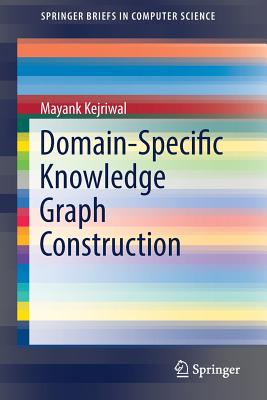Exposing the Magic of Design: A Practitioner's Guide to the Methods and Theory of Synthesis (Hardcover)
暫譯: 揭示設計的魔力:實務者的綜合方法與理論指南(精裝版)
Jon Kolko
- 出版商: Oxford University
- 出版日期: 2011-01-28
- 售價: $3,660
- 貴賓價: 9.5 折 $3,477
- 語言: 英文
- 頁數: 208
- 裝訂: Hardcover
- ISBN: 0199744335
- ISBN-13: 9780199744336
-
相關分類:
設計需求 Requirement
無法訂購
買這商品的人也買了...
相關主題
商品描述
As the world deals with increasing complexity -- in issues of sustainability, finance, culture and technology -- business and governments are searching for a form of problem solving that can deal with the unprecedented levels of ambiguity and chaos. Traditional "linear thinking" has been disparaged by the popular media as being inadequate for dealing with the global economic crisis. Standard forms of marketing and product development have been rejected by businesses who need to find a way to stay competitive in a global economy. Yet little has been offered as an alternative. It is not enough to demand that someone "be more innovative" without giving him the tools to succeed.
Design synthesis is a way of thinking about complicated, multifaceted problems of this scale with a repeatable degree of success. Design synthesis methods can be applied in business, with the goal of producing new and compelling products and services, and they can be applied in government, with the goal of changing culture and bettering society. In both contexts, however, there is a need for speed and for aggressive action. This text is immediately relevant, and is more relevant than ever, as we acknowledge and continually reference a feeling of an impending and massive change. Simply, this text is intended to act as a practitioner's guide to exposing the magic of design.
There are three simple goals for this text.
The first goal is to present a theory of design synthesis in a simple and concise manner. This theory is based on academic research and discourse, but presented in a way that is clear and valuable to a practicing design manager, designer or design researcher. This theory of design synthesis can then be used to substantiate single methods of synthesis.
The second goal is to offer a rationalization of why design synthesis is important, both in a general sense ("why should I care about this at all?") as well as in a more immediate sense ("why should I care about this right now?").
The final goal is to present a set of actionable, learnable methods for design synthesis that can be applied to any design problem. Practicing industrial designers, interaction designers, interface designers, and designers of other disciplines can use these methods to make sense of complicated design problems and to move seamlessly from various forms of research to design. The methods can add a systematic sense of rigor to an otherwise subjective, often introspective process.
Design synthesis is a way of thinking about complicated, multifaceted problems of this scale with a repeatable degree of success. Design synthesis methods can be applied in business, with the goal of producing new and compelling products and services, and they can be applied in government, with the goal of changing culture and bettering society. In both contexts, however, there is a need for speed and for aggressive action. This text is immediately relevant, and is more relevant than ever, as we acknowledge and continually reference a feeling of an impending and massive change. Simply, this text is intended to act as a practitioner's guide to exposing the magic of design.
There are three simple goals for this text.
The first goal is to present a theory of design synthesis in a simple and concise manner. This theory is based on academic research and discourse, but presented in a way that is clear and valuable to a practicing design manager, designer or design researcher. This theory of design synthesis can then be used to substantiate single methods of synthesis.
The second goal is to offer a rationalization of why design synthesis is important, both in a general sense ("why should I care about this at all?") as well as in a more immediate sense ("why should I care about this right now?").
The final goal is to present a set of actionable, learnable methods for design synthesis that can be applied to any design problem. Practicing industrial designers, interaction designers, interface designers, and designers of other disciplines can use these methods to make sense of complicated design problems and to move seamlessly from various forms of research to design. The methods can add a systematic sense of rigor to an otherwise subjective, often introspective process.
商品描述(中文翻譯)
隨著世界面對日益增加的複雜性——在可持續性、金融、文化和技術等問題上——企業和政府正在尋找一種能夠應對前所未有的模糊性和混亂的問題解決方式。傳統的「線性思維」已被大眾媒體貶低為無法應對全球經濟危機的不足。標準的行銷和產品開發形式已被需要在全球經濟中保持競爭力的企業所拒絕。然而,卻很少有替代方案被提出。僅僅要求某人「更具創新性」而不提供成功的工具是不夠的。
設計綜合是一種思考這種規模的複雜、多面向問題的方法,並且能夠以可重複的成功率來應用。設計綜合方法可以應用於商業,目標是產出新的且引人注目的產品和服務;也可以應用於政府,目標是改變文化和改善社會。然而,在這兩個背景中,都需要快速和積極的行動。這本書的內容立即相關,並且比以往任何時候都更具相關性,因為我們承認並不斷提及即將到來的巨大變革的感覺。簡而言之,這本書旨在作為實踐者的指南,揭示設計的魔力。
這本書有三個簡單的目標。
第一個目標是以簡單明瞭的方式呈現設計綜合的理論。這一理論基於學術研究和討論,但以清晰且對實踐中的設計經理、設計師或設計研究者有價值的方式呈現。這一設計綜合的理論可以用來支持單一的綜合方法。
第二個目標是提供設計綜合重要性的合理化,無論是在一般意義上(「我為什麼要關心這個?」)還是在更直接的意義上(「我為什麼現在要關心這個?」)。
最後一個目標是呈現一套可行的、可學習的設計綜合方法,這些方法可以應用於任何設計問題。實踐中的工業設計師、互動設計師、介面設計師以及其他學科的設計師可以使用這些方法來理解複雜的設計問題,並無縫地從各種形式的研究轉向設計。這些方法可以為一個本質上主觀、常常內省的過程增添系統性的嚴謹感。































.jpg)


